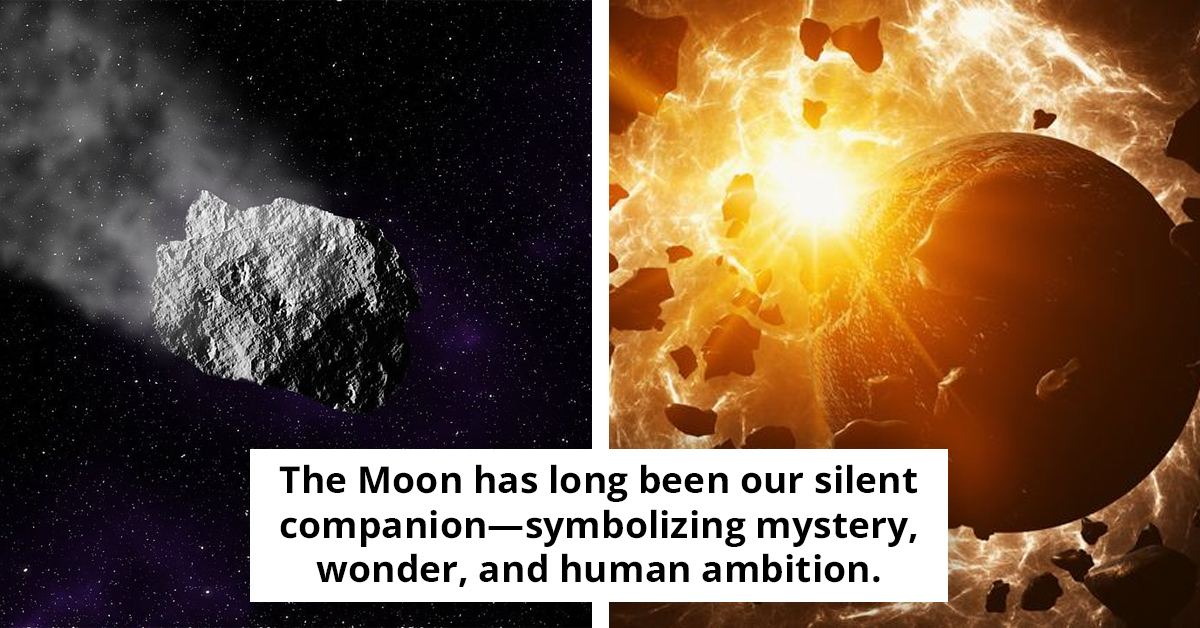
Giant Asteroid 2024 YR4, As Tall As A 10-Story Building, May Impact The Moon
Updated Impact Probability for Asteroid 2024 YR4

NASA has recently updated its assessment of asteroid 2024 YR4, a rock roughly the size of a 10-story building. It indicates that while it still poses little risk to us on Earth, the chances of it striking the Moon have increased slightly. This update, coming from careful observations and analyses, underscores the challenges and uncertainties that scientists face when tracking objects in space.
At the beginning of the year, news emerged that an enormous asteroid was barreling toward our planet. Early reports suggested that this so-called “city-destroying” object could potentially hit Earth by 2032. However, as more data came in, experts from NASA and other organizations were able to reassess the situation.
They concluded that the risk to Earth was almost negligible - practically “near-zero.” The initial worry, fueled by the sheer size and speed of the asteroid, gradually gave way to a more measured understanding of its path and behavior.
Now, the focus of concern has shifted from our home planet to our closest celestial neighbor, the Moon. According to NASA’s latest post on its website, the asteroid’s chance of colliding with the Moon on December 22, 2032, has been revised upward. In a clear and concise explanation, NASA stated that, based on new observations from the James Webb Space Telescope and several ground-based telescopes, the updated probability of impact has increased from 1.7% to 3.8%.
“There is still a 96.2% chance that the asteroid will miss the Moon. In the small chance that the asteroid were to impact, it would not alter the Moon’s orbit,” NASA explained.
New measurements show a minimal 3.8% lunar impact risk that poses no threat to Earth-Moon stability.
This update is important because it reflects how scientific assessments evolve as more precise measurements become available. While the odds may seem a bit higher for the Moon, it’s crucial to note that 3.8% still represents a minimal risk.
In practical terms, this means that we are not looking at an imminent disaster. Instead, these adjustments in probability are part of an ongoing effort by astronomers to keep tabs on objects that come close to Earth's and its satellite.
For many, the Moon holds a special place in our collective imagination. It’s been a constant companion in our night sky and a symbol of exploration, mystery, and human achievement.
Even though an impact from a space rock like 2024 YR4 would be an extraordinary event, scientists reassure us that even if it did hit, the Moon’s orbit would remain unchanged. This is a critical point because it highlights that while the collision might create a noticeable event on the lunar surface, it would not have cascading effects on the broader dynamics of the Earth-Moon system.
 iStock
iStock
The James Webb Space Telescope, along with several powerful ground-based instruments, has been instrumental in refining our understanding of the asteroid’s trajectory. After mid-April, however, the asteroid will move too far away from Earth, making it too faint for ground-based telescopes to continue monitoring it effectively.
Fortunately, NASA has planned to use the James Webb Space Telescope to pick up the task again in either late April or early May. This careful planning ensures that there will be continuous observation, allowing scientists to keep a close eye on the asteroid’s path and make further refinements if necessary.
Even with advanced technology and sophisticated instruments, there remains an element of uncertainty in predicting exact paths far into the future. NASA’s ability to update these probabilities shows a commitment to transparency and scientific rigor, helping the public understand both the risks and the realities of space exploration and planetary defense.
In everyday terms, while an asteroid the size of a 10-story building might capture headlines and fuel our imaginations with visions of cosmic collisions, the likelihood of any catastrophic event remains very small. NASA’s ongoing observations and updates provide reassurance that scientists are on top of these developments.
They continue to monitor such objects, refine their models, and keep us informed of any changes in risk. The focus on the Moon rather than Earth at this point further underscores that our planet is safe.
Damjan







